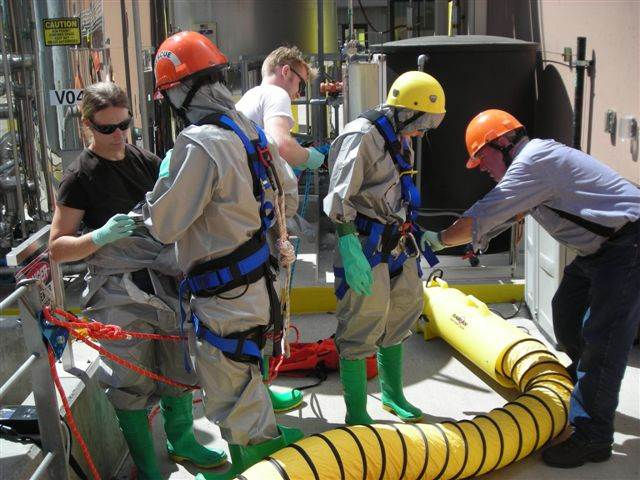Barriers or Local Ventilation
When the potential hazard cannot be removed, replaced, or enclosed, the next best approach is a barrier to exposure or, in the case of air contaminants, local exhaust ventilation to remove the contaminant from the workplace.
Both the use of barriers and ventilation may still potentially expose employees to hazards even in normal operations. Consequently, these controls should be used only in conjunction with other types of controls, such as safe work practices designed specifically for the site condition and/or PPE. Examples include:
- ventilation hoods in spray booths;
- electronic sensor barriers;
- isolation of a process in an area away from workers;
- baffles used as noise-absorbing barriers; and
- nuclear radiation or heat shields.
Knowledge Check Choose the best answer for the question.
3-6. What is the purpose of using barriers or local ventilation when dealing with hazards in the workplace?
You forgot to answer the question!

